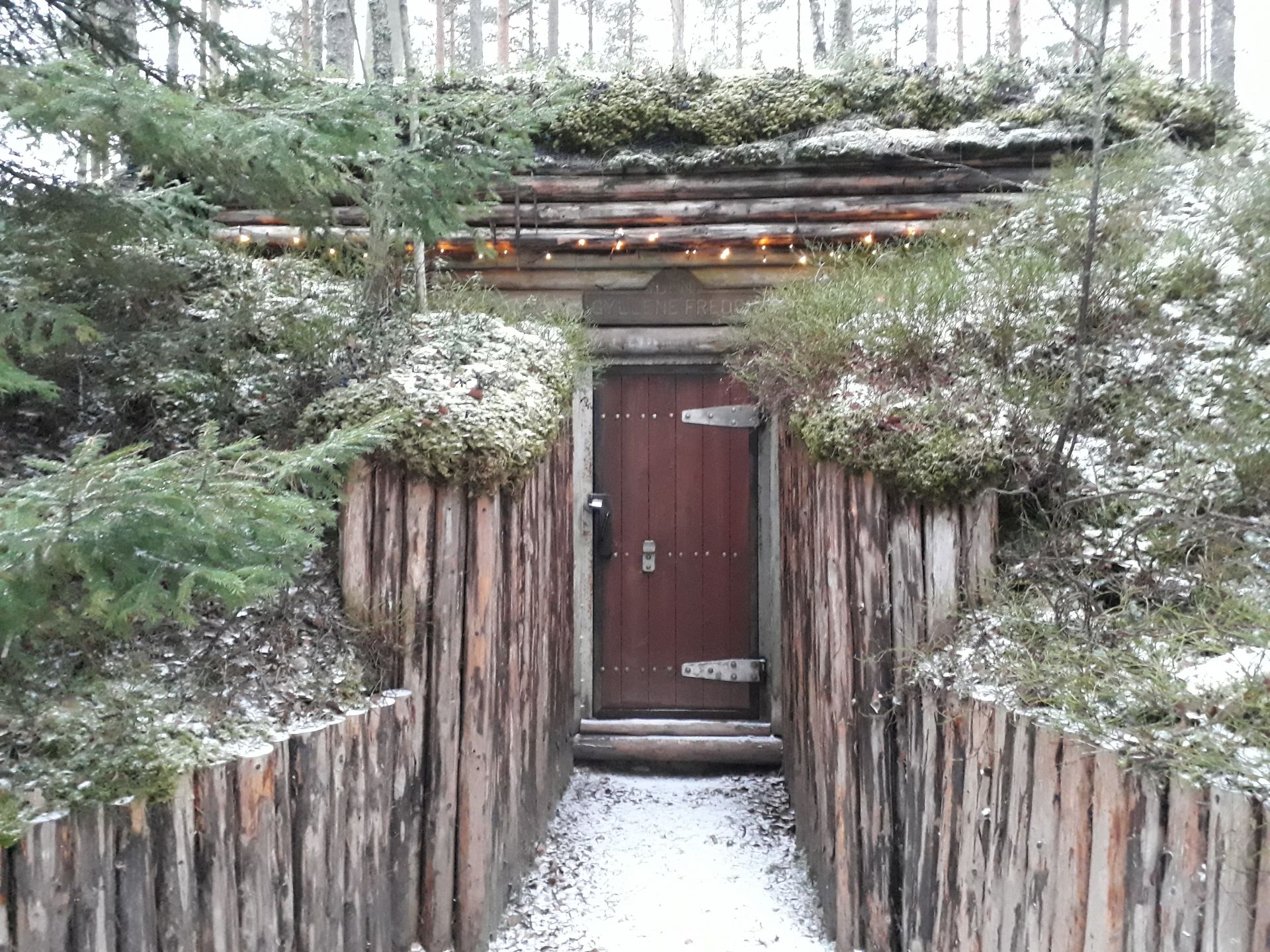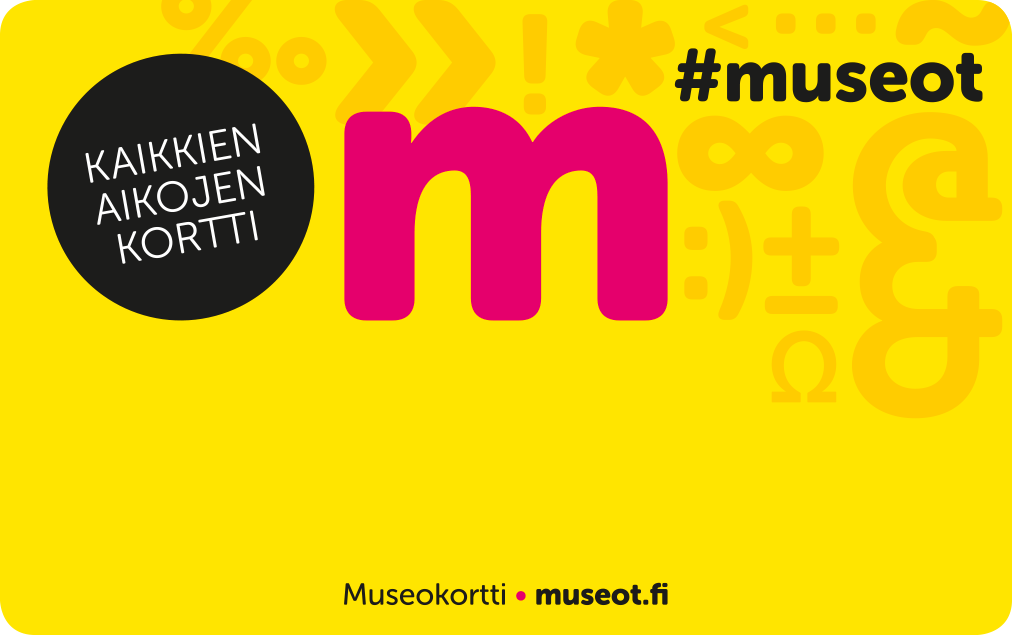The Hanko Front Museum
The permanent exhibition
The museum’s permanent exhibition Hanko in Foreign Hands gives a good overview of the events of 1939 –1941 when the city of Hanko was of strategic importance for Finland. The permanent exhibition consists of a careful selection of historical items, photographs, informative texts and maps. The showcases contain objects including kitchen utensils, tableware, weapons, medals and uniforms. There is also a film on the evacuation. The exhibition also presents life in idyllic Hanko before the Winter War of 1939 –1940. The Winter War and the emotional aspects of its evacuation in March 1940 are naturally included. The exhibition also describes and demonstrates the Harparskog Line across Hankoniemi Cape, which was Finland’s first line of defence. It is a unique experience to be in the museum, knowing that the border of the Soviet lease area was only about a hundred metres away.
The Traditon Center
The museum was expanded in 2024 with a new annex that meets all the hallmarks of a modern museum. The new building, called the Tradition Center, features high-quality war history exhibitions. The goal of the Tradition Center is to preserve the traditions, values, and historical legacy of our war veterans and to pass them on to future generations. The first themed exhibition in the Tradition Center is titled "The Veteran’s Life Path 1945–2025."
In the permanent exhibition at the Tradition Center, visitors can explore a Hanko home as it appeared before the war in 1939 and again in 1942. The contrast between the cozy pre-war home and the later war-ravaged home is striking, with the staging remarkably authentic. In the cinema room, visitors can pause to watch the poignant documentary "Vi minns kriget" (We Remember the War) (21 minutes), where nine individuals recount their childhood memories of Hanko and its surrounding areas during and after the war.
The staging of the rooms was designed and executed by Petri Horttana.
The Artillery Hall
The Artillery Hall is a space for ten wartime artillery pieces, which were all used by the Finnish Defence Forces during the Second World War. This hall also offers a space for permanent and temporary exhibitions. Currently, you can also explore a themed exhibition about the archipelago battles in The Artillery Hall.
Outdoors
The Hankoniemi Front Museum is in a strategically important location. Important events in the history of Finland took place in the pine forest surrounding the museum. The whole area has an atmosphere of the past, and a feeling of history can be gained on a quiet walk around the site. There are communication and firing trenches just outside the museum building, and the Gyllene Freden dug-out and the Hillock of Death are only a stone’s throw away. For our younger visitors there is an obstacle course and next to it a roof shelter with benches and tables for a moment’s rest.
.jpg)
The War Path
The War Path, slightly over a kilometre long, begins behind the museum building. This marked route passes through the area defended by the Swedish Volunteer Battalion during the Continuation War and it continues to the former Soviet side of the front. Its main locations are marked with white arrows and signs. The path includes communication trenches, tent pits, a latrine, a firing position, a tunnel, a large slingshot for grenades and other features. An information booklet following the War Path can be borrowed from the canteen.
History of Hankoniemi Front Museum
The Hankoniemi Front Museum has a time-honoured history. Museum activities came under way in 1985 when the Karis Krigsveteraner war veterans’ association built a dug-out museum at a former war-time section of the front at Lappohja at the original border of the Hankoniemi Cape area leased by the Soviet Union in 1940. The museum initiative was closely associated with the nation-wide recognition of Finland’s war veterans in the 1980s. The leading figure of the project was war veteran Stig Häggström, the chairman of the association, who organised the construction of the Gyllene Freden memorial dug-out in 1981. The project involved the efforts of some ten war veterans from Hanko.

These achievements led to an appetite for more, and Stig Häggström soon began to plan a museum to accompany the dug-out. The intention was not to embellish the war. On the contrary, those who were involved wanted to create a museum that would describe the events of the Hanko front, the heavy fighting in the adjacent archipelago during the Finnish-Soviet Continuation War of 1941 –1944 and the hard life of the war years. The site of the museum was well chosen. The area contains former communication and firing trenches, pits for tents and horses, concrete bunkers etc. The original museum, which was inaugurated in July 1987 soon became a popular attraction. The museum’s activities expanded and several enthusiasts became involved.
.jpg)
After the death of Stig Häggström, the museum’s activities declined. Owing to the lack of resources, the veterans’ association sold the museum to the new West Uusimaa Society of Military History. The Society’s mission includes the preservation of information and memories with focus on the Hankoniemi Front and the war years of 1939–1945. Thanks to a new owner and donations from businesses, associations and foundations, the museum could be renewed and enlarged. During the summer of 2017 in the centenary year of Finnish independence, the museum was reopened to the public in a new and improved version. The development of the museum has continued ever since.


.JPG)
.JPG)
.JPG)
.JPG)
.JPG)


.png)

.png)